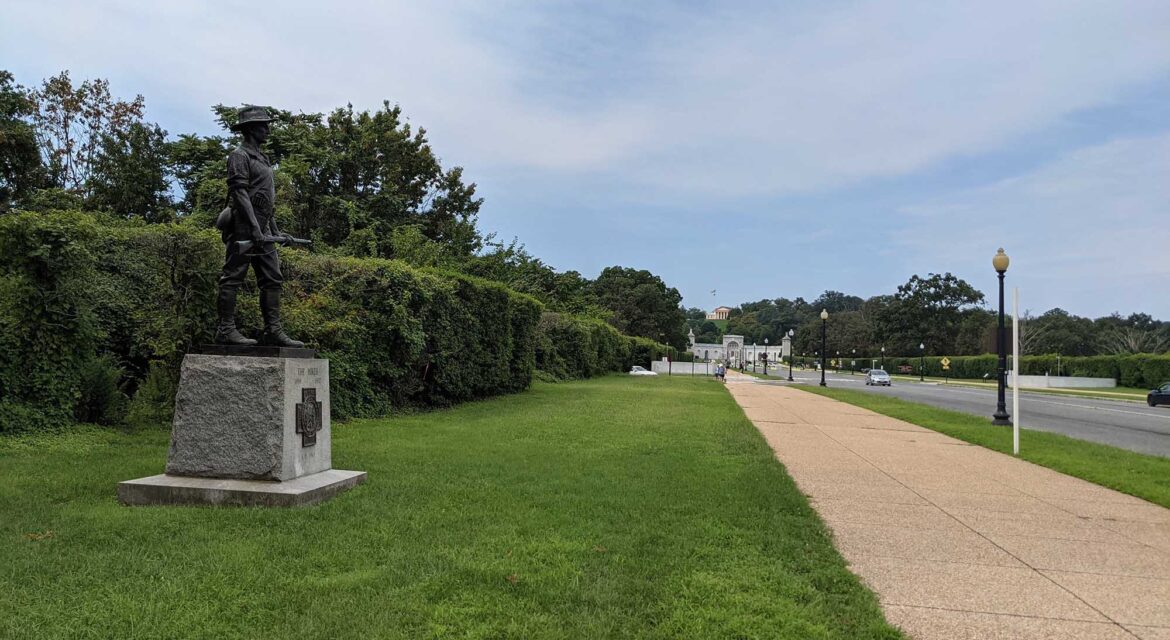 The seven memorials that have been placed along Memorial Avenue make up the Avenue of Heroes in Arlington, Virginia. As the street that defines the entrance to Arlington National Cemetery, it would be a significant location regardless of whatever other features it contains. However, the inclusion of these monuments has transformed what would otherwise be an unremarkable street into an additional attraction for the city that celebrates the history and legacy of the entire United States.
The seven memorials that have been placed along Memorial Avenue make up the Avenue of Heroes in Arlington, Virginia. As the street that defines the entrance to Arlington National Cemetery, it would be a significant location regardless of whatever other features it contains. However, the inclusion of these monuments has transformed what would otherwise be an unremarkable street into an additional attraction for the city that celebrates the history and legacy of the entire United States.

Flanked with monuments to American heroes
 Memorial Avenue was created at the same time as the Arlington Memorial Bridge to serve as a ceremonial entrance to Arlington National Cemetery. The bridge was designed to show the strength of a united nation. Plans to flank the street with statues of American heroes saw the installation of several monuments beginning in 1960. Numerous markers define and celebrate this history.
Memorial Avenue was created at the same time as the Arlington Memorial Bridge to serve as a ceremonial entrance to Arlington National Cemetery. The bridge was designed to show the strength of a united nation. Plans to flank the street with statues of American heroes saw the installation of several monuments beginning in 1960. Numerous markers define and celebrate this history.
The Avenue of Heroes features seven monuments in total. The end of the avenue features a large hemicycle that houses the Women in Military Service for America Memorial. Other landmarks on the avenue include the American Armored Force Memorial, Fourth Division Memorial, Seabees of the U.S. Navy Memorial, United Spanish War Veterans Memorial, Admiral Richard Byrd Memorial and the 101st Army Airborne Division Memorial. Each uniquely celebrates the legacy of an individual, event or unit.
With the space to house many other monuments and landmarks, the Avenue of Heroes has the potential to grow and further transform what would otherwise simply be the street that led visitors into Arlington National Cemetery. Doing so has cultivated a legacy that connects audiences and eras.

More than an Entrance to a Landmark
 Arlington National Cemetery is one of the most important landmarks in the United States but the transformation of Memorial Avenue into the Avenue of Heroes highlights how many additional opportunities such landmarks possess. Partly enclosed by a hedge of American holly and white okay trees amidst seven remarkable monuments, the Avenue of Heroes highlights what it can mean to enable additional opportunities that inherently exist as part of an existing landmarks.
Arlington National Cemetery is one of the most important landmarks in the United States but the transformation of Memorial Avenue into the Avenue of Heroes highlights how many additional opportunities such landmarks possess. Partly enclosed by a hedge of American holly and white okay trees amidst seven remarkable monuments, the Avenue of Heroes highlights what it can mean to enable additional opportunities that inherently exist as part of an existing landmarks.

